8 Top Single-Page Application Frameworks for Web App Development

Table of Contents
A few very big names, like Gmail, Netflix and Twitter, have features that load so quickly and feel almost like using a native mobile app, even though they run entirely in your browser. This is a Single-Page application (SPA) for web apps.
SPAs are becoming the preferred method for creating modern web apps since users demand quick interactions and seamless navigation. SPA gives you a speedier experience by dynamically updating only the portion that changes, rather than reloading the full webpage each time you click on something.
According to a reputed statistics website, Statista, the global web app development market is projected to exceed $600 billion by 2030. A major share of this growth is driven by single-page application frameworks like React, Angular, and Vue.js.
These frameworks are currently being used by businesses and web app development firms to produce apps that are responsive, lightweight, and function well on all devices.
We’ll look at 8 of the best single-page application frameworks for creating web apps in this blog. Therefore, this article will help you understand which framework best fits your aims and why SPAs are here to stay if you’re a developer, a tech enthusiast, or a business owner looking to employ a web app development company
Complex web projects often face slow load times
Build smarter with powerful SPA frameworks
What is a Single-Page Application (SPAs)?
When a web application functions as smoothly and quickly as a mobile utility, doesn’t continually refresh, doesn’t require you to wait for new pages to load, and instantaneously changes its content when you click, it’s referred to as a single-page application.
An SPA is a type of web software that masses a single HTML page and dynamically alters its content in response to user input. The SPA makes the experience quicker and smoother with the aid of simply obtaining the applicable information from the server instead of reloading the entire website on every occasion you click on something.
Gmail, Google Maps, Netflix, Trello, and Vue.js are some well-known examples of applications constructed with SPA frameworks along with React, Angular, or Vue.js. By permitting net developers to create apps that behave like native mobile apps, those frameworks enhance user enjoy and overall performance.
Websites that load slowly are undesirable to modern users. A website that takes longer than three seconds to load will be abandoned by 53% of users, according to research. SPAs successfully solve this issue and provide a near-native browser experience by loading content just once and instantly refreshing it.
For this reason, top web app development firms and startups are using SPA frameworks to create apps that not only look fantastic but also function flawlessly.
The Power Behind SPAs
A Single-Page Application Framework helps developers build apps that are:
- Faster: With each interaction, only the content that is required loads.
- Interactive: Users feel more connected when there are dynamic transitions.
- Efficient: Enhances performance and lowers server load.
- Scalable: Easier to update and maintain as your company expands.
How Does a Single-Page Application Work?
An SPA loads everything as soon as, after which it modifies the data in the heritage the usage of JavaScript and APIs, instead of loading a brand new page each time a person clicks on something. This gives the influence which you are the use of legitimate software, even when you are the usage of an internet browser.
A SPA framework is designed to handle all user interactions within a single web page. Here’s the way it works step-by-step:
Initial Page Load:
A single HTML file, CSS, JavaScript, and other resources are downloaded by the browser when a user first views the application. Everything happens rather quickly after this initial load, which might take a little longer.
Dynamic Updates Using JavaScript:
The SPA does not retrieve complete pages from the server after it is loaded. Rather, it uses APIs or AJAX queries to interface with the server in order to obtain only the necessary information rather than the entire HTML.
Client-Side Rendering:
That data is rendered dynamically on the client side by the SPA framework. Client-side rendering is the procedure that gives SPAs their quick and fluid performance.
Routing Without Reloading:
When you go between regions, the URL could change, but because SPAs use client-side routing, the page does not reload. Frameworks like Angular Router and React Router manage this routing.
APIs Keep the Data Fresh:
Small amounts of data are continuously sent between SPAs and the backend via GraphQL or RESTful APIs. This enables the app to show updated content instantly, much like when a new remark or tweet appears without requiring a page refresh.
A Simple Example:
Suppose you start Netflix. The program does not open a new page when you click on a video. Rather, it uses its SPA framework to swiftly alter the view after retrieving the movie’s data (title, description, thumbnail, etc.) from the server. These days, creating web applications is beautiful since everything appears to be swift, smart, and connected.
What are the Benefits of Using the SPA Framework?
Every time they click on a website, nobody wants to have to wait for it to load again. Because of this, SPAs are now the foundation of contemporary online application development.
Like mobile apps, an SPA framework such as React, Angular, or Vue.js enables developers to construct online applications that are faster, more interactive, and easier to use. But let’s dissect it and see why SPAs are so well-liked by users and web app development firms these days.
1. Lightning-Fast Performance
The rapidity of SPAs is one of its main advantages. Users enjoy quicker navigation and less waiting time because the app just loads once and then simply retrieves fresh data rather than refreshing full pages.
Websites that load in less than two seconds have 50% higher engagement rates than slower ones, according to Google’s Web Performance Report. By utilising client-side rendering, where the majority of processing takes place in the browser rather than on the server, SPA frameworks enable developers to do this.
Because no one clicks away from a quick and responsive app, businesses will benefit from increased user engagement and conversions.
2. Seamless User Experience
Have you ever noticed how Twitter, Trello, and Netflix apps are? This is due to the fact that they employ SPA frameworks to dynamically alter content without necessitating a complete page reload.
SPAs provide customers with a smooth experience that is almost exactly like using a native app because of their quick animations, data updates, and transitions. This brings huge benefits for contemporary users who quickly navigate between tabs, displays, and gadgets.
3. Simplified Development and Maintenance
Development is made easier and more organised by using an SPA framework. Developers can work on the frontend and backend independently since they are not closely related. Reusable components are commonly used by SPAs, which reduces code problems and saves time. Debugging and updates are easier because the logic and structure stay consistent across the app.
This makes SPAs especially beneficial for web app development companies that handle multiple projects simultaneously. Faster development cycles mean faster product launches, something every business wants.
4. Better Caching and Offline Functionality
Modern SPAs hire service personnel to store data locally. This implies that a consumer can still utilise a number of the program’s functionality after downloading it, even in the absence of a live net connection.
Think about the use of Gmail or Google Docs offline, then syncing and editing when you’re again online. This is a significant advantage for companies that provide internet app development services because it promotes accessibility and consumer engagement in spite of slow internet connections.
5. Reduced Server Load and Cost Efficiency
This suggests that even without an energetic internet connection, a consumer can nevertheless make use of a number of this system’s capabilities after downloading it. Consider the usage of Google Docs or Gmail offline, then synchronising and editing while you’re back online.
This is a huge benefit for agencies that offer net app development services because it promotes accessibility and user participation in spite of slow net connections. SPAs manage increasing user traffic more effectively without placing additional strain on the backend.
6.Mobile-Friendly and Scalable
By 2025, mobile devices will account for more than 58% of all internet traffic worldwide. Because SPAs are responsive, adaptable, and made to function effectively on all screen sizes, they are perfect for a world that prioritises mobile. Scaling programs as organisations expand is also made simple by SPA frameworks. Without having to completely rebuild the application, developers may simply integrate APIs and add new features.
7. Easier Integration with Modern Tools
Popular tools and technologies that are helpful for complex or data-driven applications, such as RESTful APIs, GraphQL, and microservices, are compatible with SPAs. Because of its flexibility, the SPA framework is perfect for web application development frameworks that need data collecting, regular updates, or service integration.
8.User Engagement and SEO Improvements
SPAs can rank higher in search results because to server-side rendering provided by modern SPA frameworks like Next.js and Nuxt.js. SPAs are a popular option for companies looking to draw in and retain customers since they integrate performance, engagement, and SEO optimisation.
Which are the Top 8 SPA Frameworks in 2025?
The web app development market has grown significantly in recent years, and 2025 will be no exception. Organisations and developers can find more innovative, scalable, and effective solutions with the aid of SPA frameworks. Everyone uses SPA frameworks to create lightweight, interactive, and high-performing programs from startups to major companies.
Let’s examine the top eight frameworks for single-page applications that will influence web development in 2025.
1.React.js
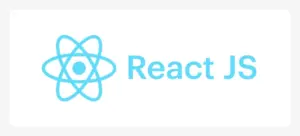
With proper motivation, Meta’s React.js will continue to dominate the SPA landscape in 2025. It is fast, flexible, and supported by way of a huge community. React makes app experiences fairly fast with the aid of the use of a digital DOM that best updates what is necessary.
Because of its issue-based structure, builders might also efficaciously reuse code, which speeds up improvement. Leaders inside the industry like Netflix, Airbnb, and Instagram use it significantly, and it’s excellent for corporations seeking out scalable net app improvement services and dynamic person interfaces.
Best for: Large-scale, interactive web apps and startups needing speed and flexibility.
2. Angular
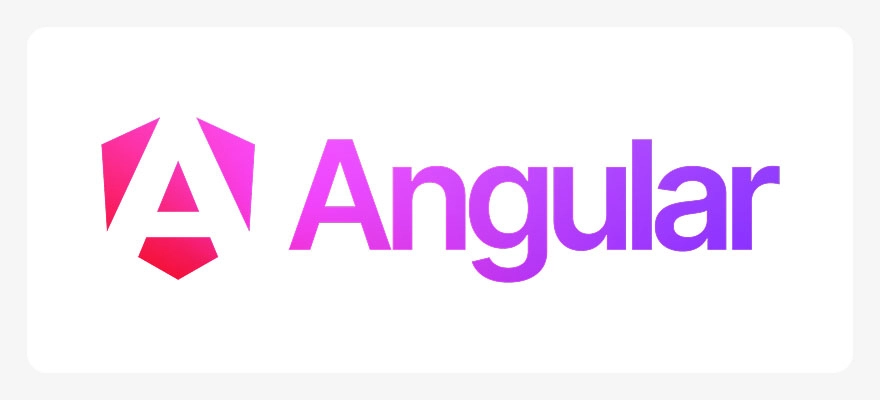
Google created Angular, one of the most potent Application Frameworks for Web App Development. It is a full framework that consists of everything from shape validation to kingdom control and routing, as compared to React, which is handiest a library.
The usage of TypeScript with the aid of Angular is a big gain for company-degree programs as it allows for cleaner, more mistake-free code. Web app development companies that build complicated, information-driven applications like dashboards, CRMs, and e-commerce structures will continue to apply Angular.
Best for: Large enterprise applications needing structured architecture and long-term maintenance.
3.Vue.js
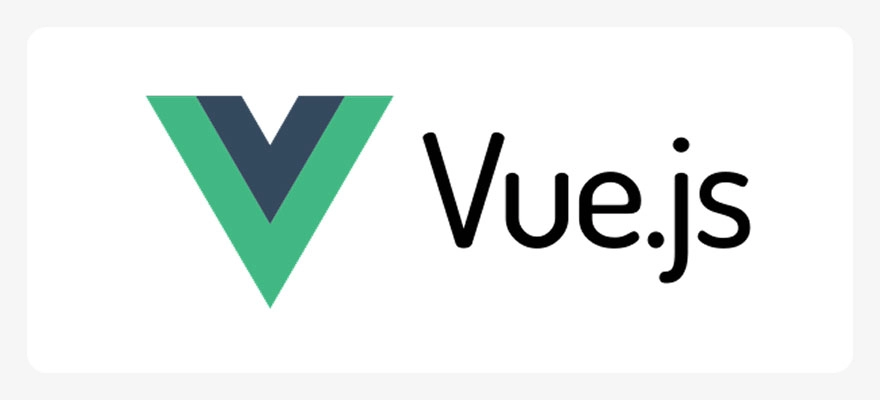
Due to its versatility and ease of use, Vue.js has made a strong name for itself in the SPA market. It combines exceptional elements from Angular and React to offer ease of use and overall performance. Its two-way statistical binding and reactive additions are suitable for building lightweight and fast SPAs.
Vue’s rapid learning curve and compatibility with current systems are praised by developers. There is a vibrant open-source community, and it is becoming increasingly popular in Asian and European markets.
Ideal for: Startups or small to medium-sized projects seeking scalability, speed, and simplicity.
4. Svelte
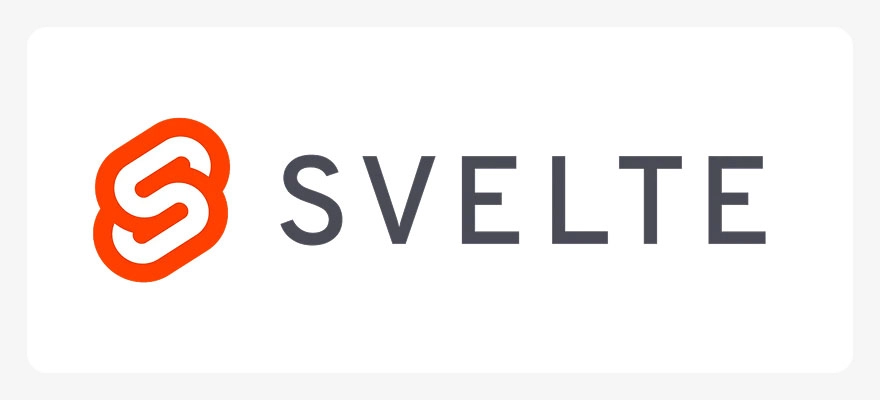
Svelte is one of the maximum famous frameworks in recent years, typically called the “next generation” SPA framework. Unlike standard frameworks, which run code in the browser, Svelte moves most of the painting to assembly time. Better runtime performance and smaller program sizes are achieved in this manner, leading to lightning-fast speeds and simple interactions.
Svelte is one of the best frameworks to consider in 2025, with developer interest growing by more than 25% annually.
Ideal for: Developers seeking simpler, faster, lighter, and more effective apps.
5.Ember.js

Even though Ember.js has been around for a while, it’s still a fantastic option for challenging and large-scale web work. Ember is well-known for its “convention over configuration” approach, which includes a robust command-line interface, integrated routing, and ready-to-use mission structures. This ensures consistency across big groups while also cutting down on improvement time.
Popular apps like LinkedIn and Apple Music have used Ember for years, proving its reliability in enterprise environments.
Best for: Complex, long-term web applications needing strong structure and scalability.
6.Backbone.js
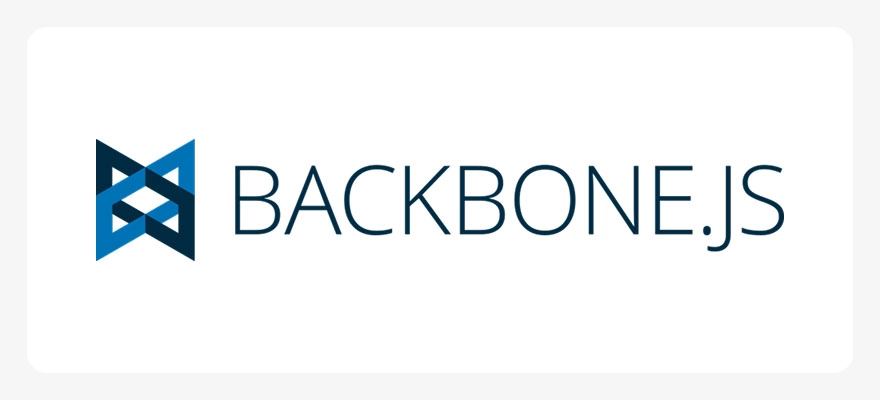
Backbone.js supplied the muse for many early SPAs earlier than current frameworks took hold, and it remains relevant these days. It offers developers a light-weight and adaptable shape based on the Model-View-Presenter paradigm.
While it does not include as many integrated functionalities as contemporary frameworks, it is easy to modify and combine with other libraries. Backbone continues to be a basic and effective choice for internet app improvement organisations that are seeking complete architectural management.
Best for: Simple SPAs or legacy projects needing a lightweight solution.
7.Next.js

Nuxt.js symbolises Vue.js if Next.js represents React. Nuxt makes Vue apps more powerful and effective by adding server-side rendering, smart routing, and static site generation.
For developers who enjoy Vue but want improved SEO, scalability, and caching support, it’s ideal. With continuous updates through 2025, Nuxt has established itself as a tool for web app development services that value speed and efficiency.
Ideal for: Companies seeking the advantages of SPAs with quicker load times and SEO optimisation.
8. Nuxt.js

If Next.js symbolises React, Nuxt.js represents Vue.js. Nuxt enhances Vue apps with server-side rendering, automatic routing, and static website online generation, growing their energy and performance.
It’s best for developers who experience Vue but need improved SEO, scalability, and caching assistance. With chronic enhancements through 2025, Nuxt has positioned itself as a go-to answer for web app development services that prioritise pace and performance.
Best for: Developers using Vue.js who need SEO-friendly and high-performance SPAs.
Outdated frameworks limit your app’s reach and responsiveness.
Empower growth with modern SPA technologies.
What are the Common Challenges in the SPA Framework?
Although creating an SPA with quick performance, fluid navigation, and app-like experiences sounds exciting, it’s not always easy. SPAs, like any other technology, provide unique development obstacles that developers and web app development businesses must solve to provide a pleasant and safe user experience.
Let’s take a closer look at the common challenges in SPA development that matter most in 2025, along with practical ways to address them.
1. SEO Limitations
One of the most vital concerns for each unmarried-page utility platform is search engine optimisation. Because SPAs usually load content via JavaScript, conventional seek engine crawlers regularly struggle to index them properly. While frameworks like Next.js and Nuxt.js have protected Server-Side Rendering to enhance search engine optimisation visibility, no longer do all SPAs.
2. Performance Optimisation
SPAs are designed for speed, but their initial load time can sometimes be slow. Because before rendering anything on the screen, the browser must download the full JavaScript package, HTML, and CSS. The beginning of the application may be delayed by a high initial payload, particularly on mobile networks or older devices.
3. Security Risks
SPAs may be susceptible to security risks like Cross-Site Scripting, Cross-Site Request Forgery, or unauthorised API access if they are not adequately secured because of their substantial reliance on APIs for data retrieval. When web app development businesses create apps that handle sensitive data, like banking or healthcare data, data protection becomes even more crucial.
4. Browser Compatibility
Apps may act differently on different platforms because each browser reads JavaScript differently. Users with obsolete systems may experience problems since some JavaScript capabilities and contemporary APIs may not be supported by older browsers.
5. State Management
Managing and coordinating the shared state data between SPA components may be difficult. When several components depend on the same data, inadequate state handling could lead to problems and inconsistent data. To solve this problem and maintain data consistency throughout the application, developers commonly employ state management frameworks like Redux, Pinia, or MobX.
6. Memory Leaks and Performance Bottlenecks
Memory leaks can occur when SPAs remain open for extended periods of time, particularly when developing enterprise web apps. These leaks occur when unnecessary data or event listeners are not cleared from memory, gradually slowing down performance.
7. Poor Offline Support
Most SPAs do not operate offline by default, in contrast to Progressive Web Apps. When the internet connection drops, users could become agitated, particularly in areas where mobile devices are the primary mode of mobility.
8. Scalability and Code Maintenance
As SPAs expand, managing their architecture becomes more difficult. Long-term program maintenance may be difficult if developers working on the same codebase have different coding styles. TypeScript, component-based programming, and modular architecture can all help make code more understandable and scalable.
How to Choose the Right SPA Framework For Your Project?
Selecting the precise SPA framework determines the energy, velocity, and scalability of your online application, just like choosing the suitable basis for your best domestic. As organisations transition to seamless virtual reports in 2025, the need for a framework is critical to performance and fulfilment.
So, how do you pick the best one for your project?
1. Define Your Project Goals
Recognise your needs first. A framework is essential for performance and fulfilment as businesses move to seamless virtual reports in 2025.
- Startups can benefit greatly from using React.js or Vue.js.
- Angular is suitable for large-scale, feature-rich applications.
2. Consider Ease of Learning
The skill levels of each team vary. While React provides a versatile environment, Vue.js is easier to utilise for novices. If your workforce is comfortable with JavaScript, Next.js can help speed up development.
3. Focus on Speed and Performance
Users anticipate that apps will load in less than three seconds. With reduced bundle sizes, frameworks like Svelte and React offer improved speed and faster rendering.
4. Check Community and Support
Frameworks like Angular, React, and Vue, which provide additional learning resources, updates, and support, are supported by active communities.
5. Think About Scalability and Maintenance
For rapidly growing apps, choose frameworks like Angular or Next.js that offer modular development and long-term scalability.
6. Don’t Ignore SEO and Security
Server-side rendering is managed by frameworks like Next.js and Nuxt.js, which improve SEO visibility. Angular has strong built-in defences against typical online attacks.
Managing multiple pages hinders efficiency.
Simplify workflows with SPA frameworks.
Conclusion
SPAs are leading the way inside the hastily evolving virtual global. Businesses can not have enough money to apply old websites because customers assume faster, more seamless, and app-like online experiences. The tempo and client interactions of your enterprise can be significantly impacted by using the single-web-page utility framework you choose.
At the end of the day, SPAs are more than genuinely a fashion; they represent the future of web app development. Whether you’re a startup developing your first product or an agency enhancing consumer experiences, employing the correct framework will help you continue to be ahead in a trendy, aggressive digital marketplace.
If you need to create an excessive-performance single-page utility, paintings with an experienced web app development business enterprise including Chimpare. Our team of workers assists you in choosing the high-quality Application Framework for Web App Development, making sure that your app works quickly, looks incredible, and presents a first-rate user experience.
FAQs
A Single-Page Application (SPA) is a web app that loads a single HTML page and dynamically updates content as users interact, offering faster navigation and a seamless user experience.
Businesses choose SPAs because they deliver faster performance, smoother navigation, and better user engagement, making them ideal for modern, interactive web applications.
The most popular SPA frameworks in 2025 include React.js, Angular, Vue.js, Svelte, Next.js, and Nuxt.js, known for their speed, scalability, and developer-friendly ecosystem.

Samuel Meleder
Samuel Meleder founded Chimpare, a global company that builds software solutions. With a passion for innovation and a commitment to helping businesses grow through smart digital strategies, Samuel leads a global team delivering cutting-edge solutions across industries
Found this post insightful? Don’t forget to share it with your network!
Related Articles

How Can Chimpare Guide You to Find a Good App Developer?
Choosing an exquisite app developer is a crucial first step closer to transforming your app concept into a viable commercial

Which Factors Define a Top AI Development Company in 2025?
By 2025, AI might be more than just a catchphrase; it will be important for organisations seeking to maintain their

How Much Will Robotic Process Automation Cost Your Business?
In the digital economy, companies are racing to streamline their approaches and provide better customer service. Robotic Process Automation Cost
